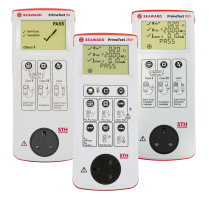PAT Testing is a great way of ensuring that your electrical equipment is safe and fit for purpose. In-service inspection and testing is a way in which Duty Holders, employers, businesses and landlords can meet their legal obligation to maintain a high safety standard of their electrical appliances.
PAT testing, as part of a regular ongoing preventative maintenance program, minimises the risk of electrical fires and electric shock damage to the users of electrical equipment.
The legal requirements and guidance relating to PAT testing and electrical safety include: Health and Safety at Work Act 1974 (HSW 1974), Management of Health and Safety at Work Regulations 1999, Electricity at Work Regulations 1989, Provision and Use of Work Equipment Regulations 1998, Housing Act 2004 (England and Wales), Housing (Scotland) Act 2006. The seaward PAT Testing equipment ensures that the tester complies with the legislation named above.
Moreover the IET code of practice sets out the standard to which electrical equipment should be visually inspected, safety tested and maintained. The 5th edition of the IET Code of Practice details equipment classifications, recommended best practices and is the main go-to guide the industry has to refer to. After this, the Duty Holder should risk assess the equipment, the environment in which the equipment is used and then implement a re-test schedule accordingly.



















Sign up to our Newsletter.
Stay up to date with the latest industry and product news, as well as our free educational content such as webinars and our expert guides.
Close